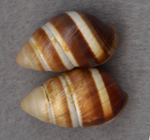“Any Study”
While the Morrill Land Grant College Act mandated support for the teaching of agriculture and engineering, Ezra Cornell and Andrew Dickson White considered it essential that these studies be integrated with a broad liberal education. Cornell University would be established as an institution for “the cultivation of the arts and sciences and of literature, and the instruction in agriculture, the mechanic arts and military tactics, and in all knowledge.” In his address at the opening of the University on October 7, 1868, Cornell reinforced these ideas: “I hope that we have laid the found-ation of an institution which shall combine practical with liberal education, which shall fit the youth of our country for the professions, the farms, the mines, the manufactories, for the investigations of science, and for mastering all the practical questions of life with success and honor. . . . I trust we have laid the foundation of an university — ‘an institution where any person can find instruction in any study.’”
From its inception, the Cornell curriculum was unique in its diversity. The early course offerings for Cornell students ranged from modern history and political science to applied mechanics and horticulture to Greek and Latin. Philosophically and in practice, it was innovative to teach modern languages and literature side by side with theoretical and applied sciences.
Both Cornell and White were closely involved in all aspects of the new university. In the spring of 1868, White sailed to Europe “in order to study technical institutions, to purchase needed equipment, and to secure certain professors such as could not then be found in our own country.” In his Autobiography, White wrote: “During three months, from funds furnished by the university, by Mr. Cornell personally, and, I may be allowed to add, from my own personal resources, I expended for these purposes over sixty thousand dollars ($791,825 in today’s money).&rdquo
 |
Ezra Cornell. Letter to Andrew Dickson White. Ithaca, New York, February 23, 1868. [zoom] | View/download a PDF of this item “I would found an institution where any person could find instruction in any study. Ezra Cornell”
|
 |
Emery. Pencil sketch of proposed seal for Cornell University, ca. 1868. [zoom] | View/download a PDF of this item |
 |
The Cornell Seal [zoom] While Ezra Cornell expressed the words of the motto in his inaugural speech, its wording first appears on the original great seal, authorized by the trustees in November of 1866 and adopted as the corporate seal on October 6, 1868. A letter from Ezra Cornell to Andrew Dickson White, February 23, 1868, includes the first mention of the motto, accompanied by preliminary sketches of the seal. With its profile likeness and famous words of Ezra Cornell, the Great Seal first appeared on the cover of The Cornell University Register, 1868-69. It was used for every diploma awarded by the University, originally printed with this embossing device. |
 |
The Cornell University Register, 1870-71. Printed for the University at the Office of the Ithaca Journal, 1871. [zoom] | Additional images: 
In his Autobiography, Andrew Dickson White enumerated the variety of collections he purchased during his 1868 European trip: “for our library a very large collection of books; physical and chemical apparatus...; chemicals...; the Rau models of plows from Hohenheim; the Brendel plant models from Breslau; the models of machine movements from London, Darmstadt, and Berlin; the plastic models of Auzoux from Paris; and other apparatus and instruments from all parts of Europe.” The Cornell University Register proudly advertised the new collections. “The various Collections of the University have been carefully formed with a view of making them, as an apparatus of study, as efficient as possible. They are accessible to all undergraduates.” |
 |
W. Newcomb. Letter to Ezra Cornell. November 25, 1867. [zoom] | View/download a PDF of this item Newcomb Conchology Collection Ezra Cornell purchased the conchology collection of Dr. Wesley Newcomb in 1868 for about $16,000. Newcomb, widely considered to be America’s most distinguished conchologist, had spent many years collecting shells from all over the Americas and Hawaii. For five years, he lived in Honolulu, where he collected many shell species that have since become extinct, and discovered over 100 new species of the genus Achatinella. Today, the Paleontological Research Institution holds the Newcomb Conchological Collection of over 30,000 shells. Our mutual friend Colo. E. Jewett has repeatedly written to me in relation to the disposition of my Collection in Conchology to the Cornell University. My chief inducement in parting with the labor of over thirty years in collecting...is that they may have a permanent and secure resting place. . . . I would much prefer that it should go to my Native State of New York.
|
 |
Spondylus pictorum Schreiber. Gulf of California. [zoom] | Additional images: 
Newcomb Conchology Collection, on loan from the Cornell Malacology Collection and the Paleontological Research Institution |
 |
Achatinella ovata Newcomb. Oahu, Hawaii. [zoom] Newcomb Conchology Collection, on loan from the Cornell Malacology Collection and the Paleontological Research Institution |
 |
Achatinella vulpine Ferusac. Oahu, Hawaii. [zoom] Newcomb Conchology Collection, on loan from the Cornell Malacology Collection and the Paleontological Research Institution |
 |
Machine Shop, Sibley College of Mechanical Engineering. [zoom] In the early days of Sibley College... Ezra Cornell would come into the machine shop and watch the boys at work. He would usually perch himself upon a high stool near some of them and ask them questions about what they thought of that kind of training, and how they liked it. And so in that way he soon gained the good will of every boy in the shop for they felt that he was their friend and had an interest in their welfare.
Professor George S. Moler, Class of 1875 in The Cornell Era: Ezra Cornell Centennial issue, May 1907. |
 |
Cornell University Schedule of Subjects, Hours and Faculty. Fall Term, 1874. [zoom] | View/download a PDF of this item |